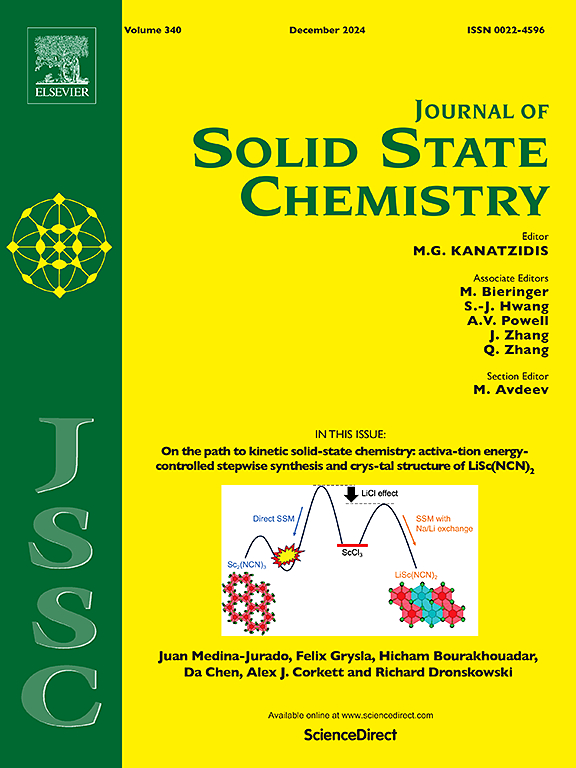Multicolored luminescence in double perovskite Gd2ZnTiO6 phosphors with Tb3+/Eu3+ codoping and energy transfer
IF 3.2
3区 化学
Q2 CHEMISTRY, INORGANIC & NUCLEAR
引用次数: 0
Abstract
Multicolor phosphors are crucial components in various applications such as screen displays, lighting fixtures, and color imaging technologies. Despite their widespread use, they still encounter some obstacles in multicolored luminescence. Here, we synthesized a series of Gd2ZnTiO6 phosphors doped with Tb3+ and Eu3+ using a high-temperature solid-state reaction method. By employing Reisfeld's approximation theory and Dexter's multipolar interaction theory, we analyzed the energy transfer mechanism from Tb3+ to Eu3+. Our findings indicate that the Tb3+ to Eu3+ energy transfer is facilitated by quadrupole-quadrupole interactions. Additionally, we assessed the thermal stability of Gd2ZnTiO6:Tb3+, Eu3+ using temperature-variable emission spectroscopy across a temperature range of 303–463 K. The Gd2ZnTiO6 phosphors exhibited polychromatic luminescence ranging from green (0.3632, 0.61033) to red (0.6521, 0.3481) under 381 nm excitation by adjusting the content of Eu3+ and Tb3+. Consequently, the Gd2ZnTiO6:Tb3+, Eu3+ phosphors exhibit excellent luminescence performance coupled with remarkable thermal stability, offering a valuable reference for the advancement of novel and robust luminescent materials.

求助全文
约1分钟内获得全文
求助全文
来源期刊

Journal of Solid State Chemistry
化学-无机化学与核化学
CiteScore
6.00
自引率
9.10%
发文量
848
审稿时长
25 days
期刊介绍:
Covering major developments in the field of solid state chemistry and related areas such as ceramics and amorphous materials, the Journal of Solid State Chemistry features studies of chemical, structural, thermodynamic, electronic, magnetic, and optical properties and processes in solids.
 求助内容:
求助内容: 应助结果提醒方式:
应助结果提醒方式:


